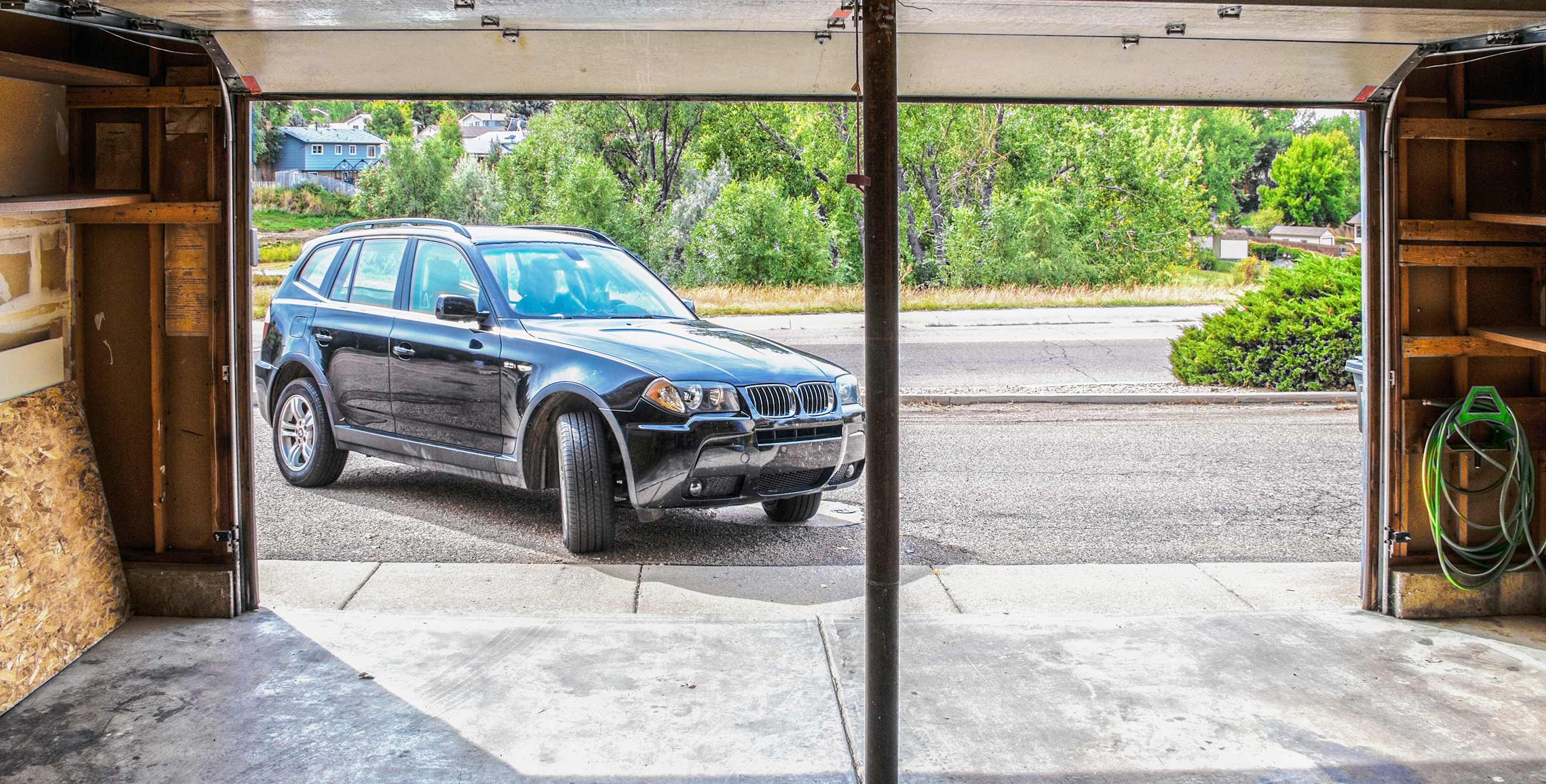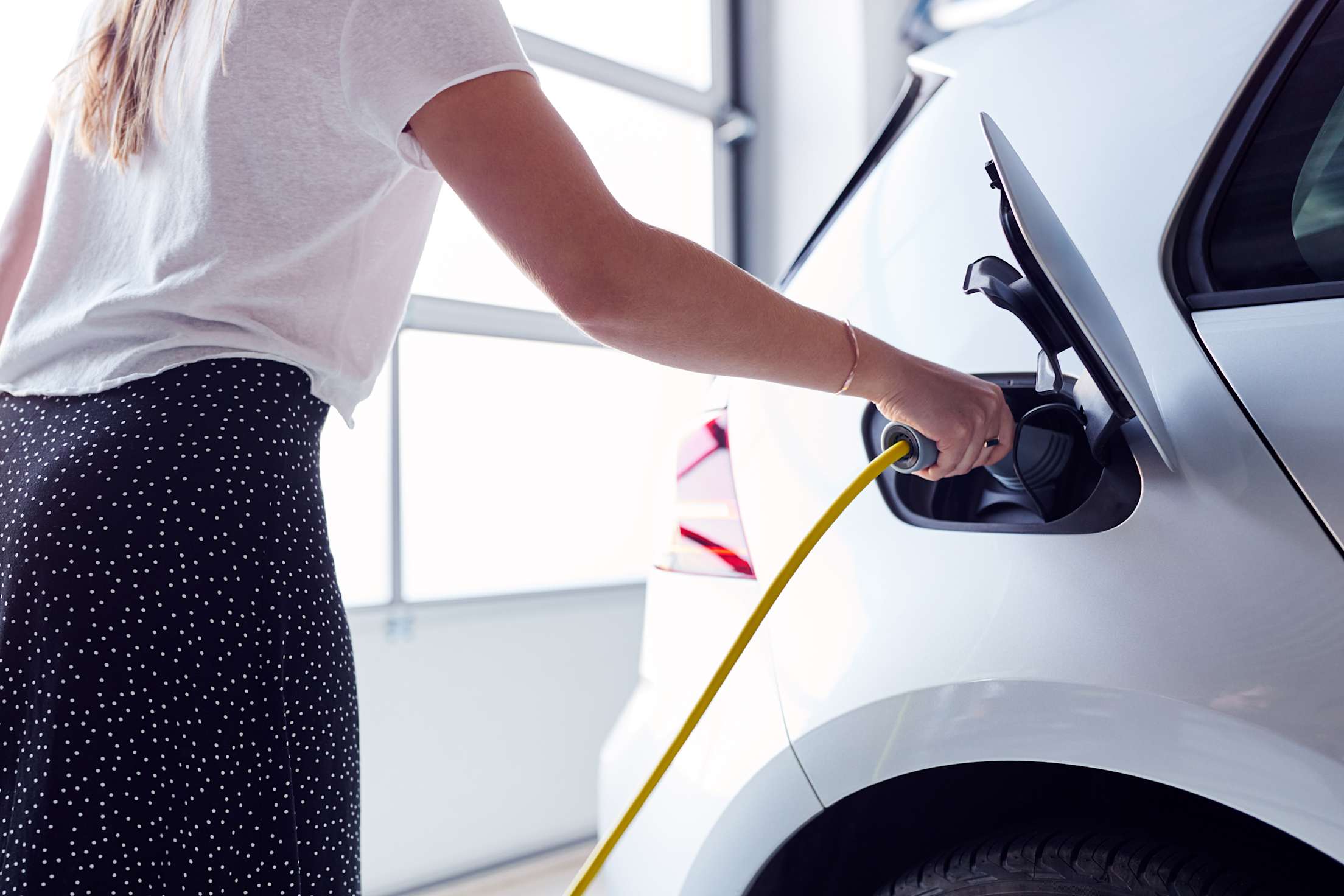
8 Reasons You Should Park Your Car Inside
And what to do if you don’t have a garage.

It’s home to your bike, lawn mower, and that lamp you were planning to fix. For nearly 20 percent of U.S. homeowners with a garage, there’s room for everything but the car, according to a survey from storage makers Gladiator® GarageWorks. But parking indoors can protect your car and extend its life.
“In most households, your vehicle is your second largest investment next to your house,” says Travis Mock, AAA operations manager in Phoenix, Arizona. “The average car costs $30,000, so it’s worth protecting.”
Jumpstart your decluttering with these eight benefits to parking inside.
Protect both the inside and exterior of your car.
“Parking inside protects your vehicle from windstorms, hail, snow, and acid rain,” says Mock. Sun, snow, or ice can damage the paint, and heavy hail can dent your hood or roof. Intense direct sunlight is hard on your car too; it can fade your upholstery, degrade the adhesive holding up your headliner, and damage plastic parts. Clean vehicles kept in the garage are less prone to rust, an issue that’s structural as well as cosmetic and expensive to fix. Cars that look well-cared for may also retain more resale value.
Minimize access for critters.
While it may not be possible to keep every critter out, enclosed parking can help prevent mice and other animals from making their home inside your vehicle. This is especially important when the weather turns, as rodents may seek warmth and nest under your hood, where they can chew on electrical wires or other critical components.
Extend the life of your battery.
Batteries perform best and last longer in mild climates. And while a healthy battery can withstand freezing temperatures, an older, weaker battery may struggle to hold a charge and start the car. Very cold temperatures can freeze and crack a worn out battery.

Charge faster inside.
Charge an electric vehicle more efficiently.
Cold batteries have to be warmed up before they can be charged, which means it can take longer and use more electricity to reach your desired charge when the temperature tips. Sure, it’s not a big deal if you have all night to recharge, but if you need to hit the road again sooner, parking inside can speed things up.
Deter crime.
Thieves prowl for unlocked cars and easy targets, and parking in a secure, locked space can help reduce the likelihood of a smash-and-grab break-in or other theft.
Extend the life of your windshield wipers and plastic components.
Sunlight and harsh outdoor conditions can break down rubber windshield wiper blades. They can also shorten the lifespan of the plastic parts on your car, from bumpers to door handles to window gaskets, by making them brittle and more prone to cracking and fading.
Keep the interior comfortable.
Parking indoors moderates the temperature inside your car so it’s immediately more comfortable for you and your passengers, and you won’t have to deal with a steering wheel that’s too cold or hot to handle.
Lower your insurance premiums.
Check with your insurance agent—some providers offer discounts for drivers with secure indoor parking.

Frequent cleaning can help protect the paint and other finishes on your car.
Can’t park inside?
Not everyone has a garage or an indoor parking space. Here’s how to protect your car if you have to park outside.
- Wash your car regularly, especially if you drive on salted roads. Even a simple rinse will help reduce the impact of salt and sand on your vehicle’s exterior.
- Wax your car seasonally to protect the paint.
- Use a sunshade or car cover to protect the interior (and exterior, when using a cover).
- Consider getting a car tent or shelter to minimize your car’s exposure to weather.
Figure out how much auto insurance you really need by speaking with an expert at AAA.